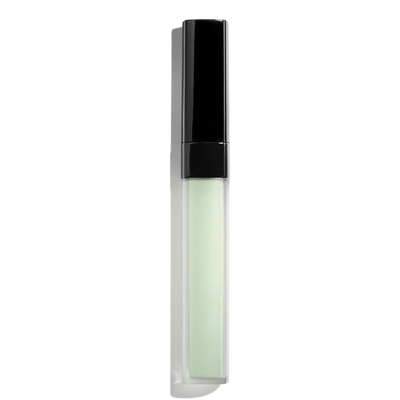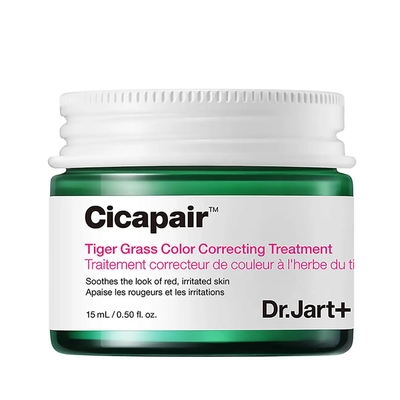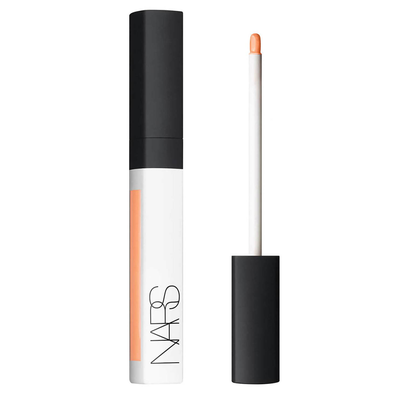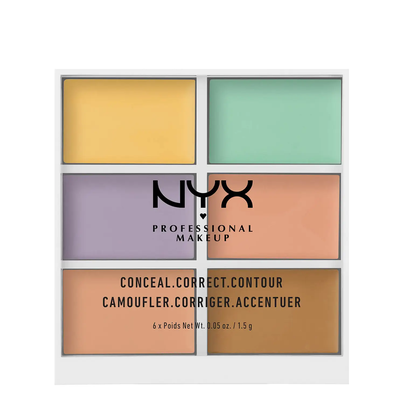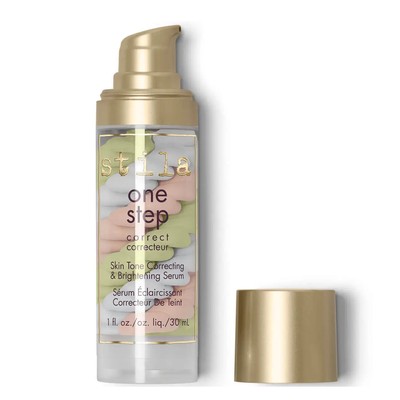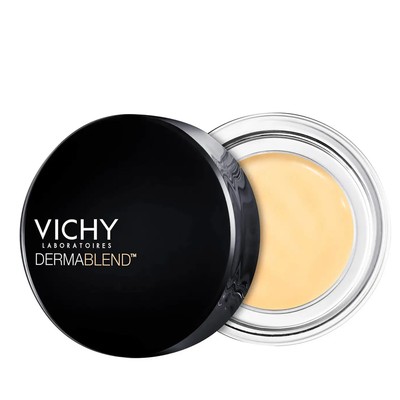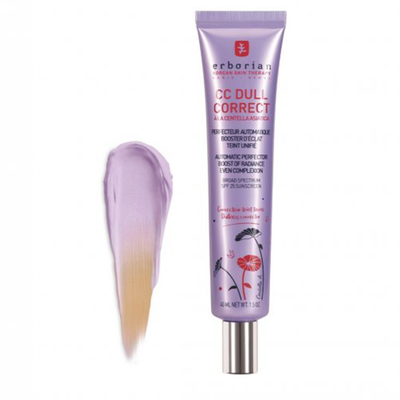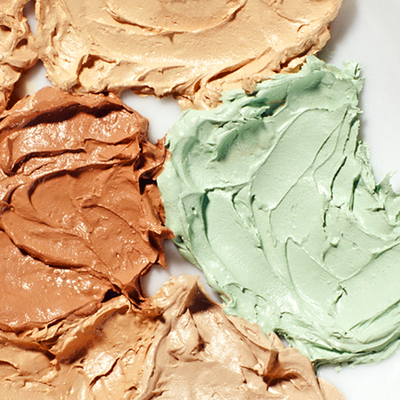
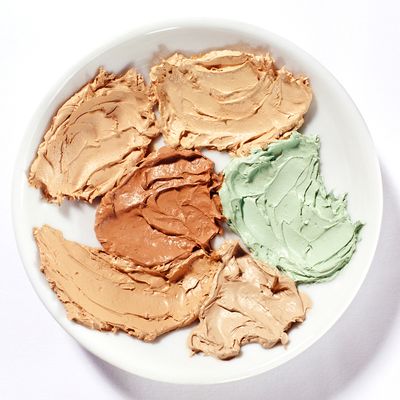
Beauty Masterclass: How To Colour Correct
All products on this page have been selected by our editorial team, however we may make commission on some products.
It Evens Out Skin Tone
“Colour correcting is still one of the most relevant make-up techniques around. As your skin continually changes, it’s important to adapt your make-up – what you want to correct in your 20s will be different to in your 50s. Colour correcting balances skin tone and conceals imperfections using a spectrum of tones to create an even finish. Put simply, you want to cancel out whatever tone it is you’re trying to conceal – so think of it as a game of opposites. For instance, to reduce redness use green to remove those ruddy tones. You’ll often find using concealer on its own may not be enough to either cover up the tone fully and/or last a whole day. Colour correctors provide a great base for everything to adhere to, so when base make-up wears off, the smoothing colour still comes through.” – Cat Parnell
Follow A Specific Technique
“Whatever it is you’re correcting – let’s say it’s redness – you want to ensure the skin is well prepped. Use a good moisturiser to ensure it doesn’t drink up the corrector and concealer that follows. Once your skincare has settled, use a corrector first. For redness, take your green corrector and lightly pat it onto your skin, onto the areas that are the most inflamed. You only need to apply the corrector to areas that actually need it – don’t use it to alter your skin tone entirely. Likewise, don’t use too much; you want to keep your approach light and make sure you blend everything really well. Afterwards, go in with your concealer, dabbing it lightly over the top to blend everything together. You’ll find using both a corrector and concealer keeps that ashy look at bay – especially under the eyes.” – Cat
Know Your Undertone
"Knowing your individual undertones will allow you to determine whether you're naturally more warm, cool or neutral. Think of colour correction as temperature. Your overall complexion is the ideal temperature. Anything too warm will need cooling down, and anything too cold will need extra warmth for the optimum result. If your problem areas appear sallow/dull/ashy, that suggests the area is cool and needs warmth. In this instance, try shades of orange/peach/salmon/terracotta and red. Look at the kinds of tones you see within the problem area and choose the opposite to colour correct." – Nilofar Mussa
Use Colour Wheels As A Guide
“Essentially, you can look at a colour wheel and see what is the opposite colour to what you want to hide. For instance, pale pinks target blue-toned spots on fair skin, while peach neutralises blue/purple shadows on medium and darker skin. Look for orange-pink tones if you want to cancel out dark spots, while yellow will conceal any purple undertones. Green corrects red – ideal for rosacea sufferers – while lavender cancels out yellowness.” – Cat
"The temperature of the colour will tell you what the product is designed for. Warm colours – like peach, orange and terracotta – will add heat to a cool area. This could be for under the eyes, especially if you suffer with blue, green or grey tones. Medium to dark complexions will sometimes find the mouth area appears a bit ashier and greyer than the rest of their skin. Brighten and correct this with a peach or orange colour corrector. This will instantly bring the temperature of that area back up to match the rest of your complexion. Cool colours – like lilac, green, blue and taupe – will cool down areas that appear too warm. This could be high redness on the cheeks, or conditions like rosacea.” – Nilofar
Opt For Cream Formulas
“For colour correcting, creams are best. They allow you to blend everything properly for a more flawless finish. You can always set the corrector and concealer afterwards with some setting powder if you prefer a matte finish or if you’re prone to oiliness. You could also use moisturisers with colour-correcting properties in them, like the new Dr Jart+ Cicapair Tiger Grass Treatment. Not only does it treat your skin to ensure fewer breakouts, it offers great coverage and minimises redness with minimal fuss.” – Cat
Take Care With Spots
“One of the most common issues I see with clients is blemishes and breakouts. Blemishes can turn very red and even be raised, making them difficult to hide – even with a generous slathering of concealer. Instead of piling on the product, choose the right colour corrector to camouflage the spot. You’ll end up using far less product and therefore spend half the time trying to hide it. I love to use a cool taupe cream – almost a mushroom/grey tone – and press it onto the area. Taupe is technically a 'cool' colour but much less scary and aggressive than green. Dabbing a tiny amount of this over the red blemish will instantly tone down any redness. I then use a face powder that matches the complexion and press a little of this over the top with a small, flat brush. This trick will bring the colour back to match the rest of your complexion. The ‘matte-ness’ of the powder also helps to flatten the appearance of any raised bumps." – Nilofar
Work In Layers
“When people colour correct, they often use too much product. You want to layer it up slowly. Less really is more, as the textures are often quite thick. Apply a little bit at a time, pushing it into the skin with fingers or a brush to help everything melt in. Doing it slowly like this will ensure you never have too much product on the skin – remember, you want to conceal not cake, so when it comes to foundation, you won’t need as much. You can always apply more corrector if needed, but it’s much harder to take it away.” – Nilofar
THE COLOUR CORRECTING TONES TO KNOW

LAVENDER
Neutralises yellowness and cancels out dullness and hyperpigmentation.

TANGERINE
Cuts blueness from the skin, so it’s brilliant for darkness – typically, the type you find under the eyes.

GREEN
This neutralises redness, so it’s ideal for cancelling out rosacea or redness caused from breakouts.

PEACH
Used to even out discolouration and darkness, this can be used anywhere that you feel needs it, but it works especially well around the eyes and mouth.

YELLOW
Yellow can be used to brighten dull, lacklustre pallor. Apply it on the cheekbones, or anywhere that needs a boost.
Follow @CatParnell & @Nilly_Vanilli for more beauty tips & advice
Shop The Best Colour Correcting Products Below...
DISCLAIMER: We endeavour to always credit the correct original source of every image we use. If you think a credit may be incorrect, please contact us at info@sheerluxe.com.
